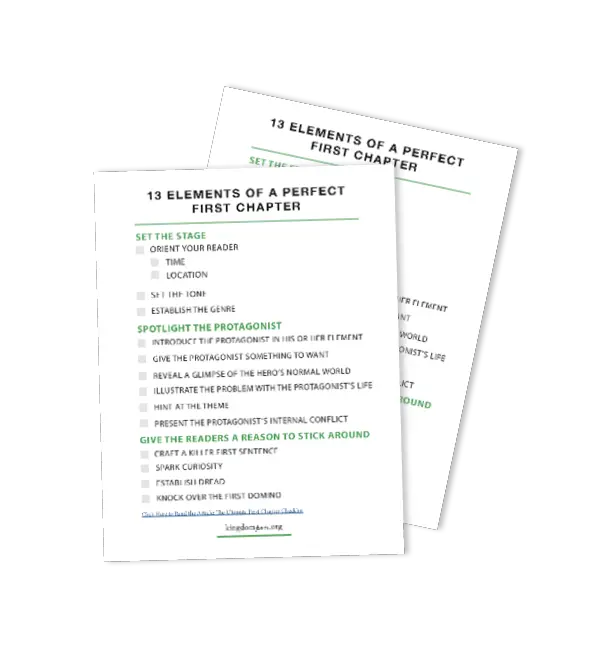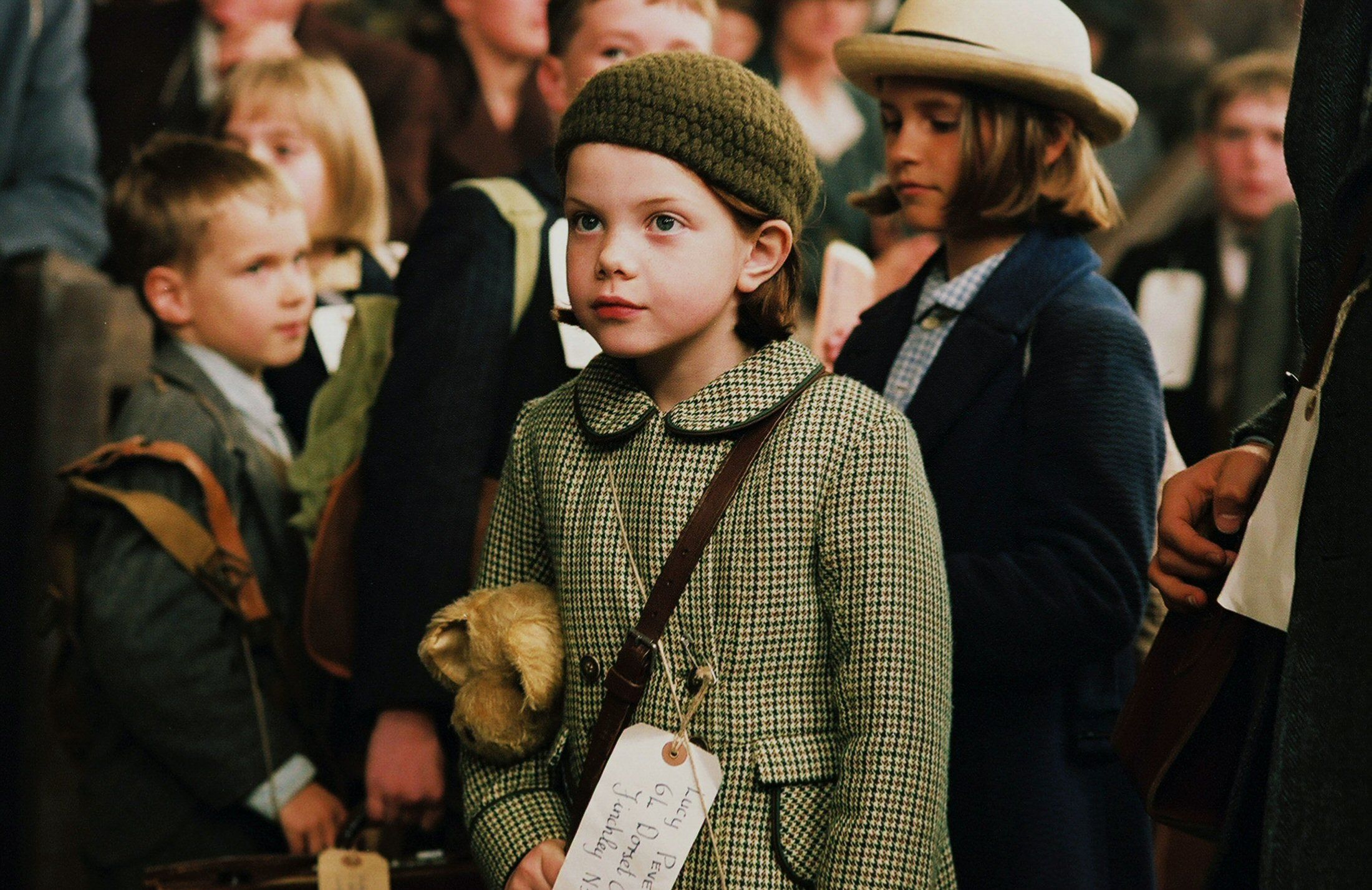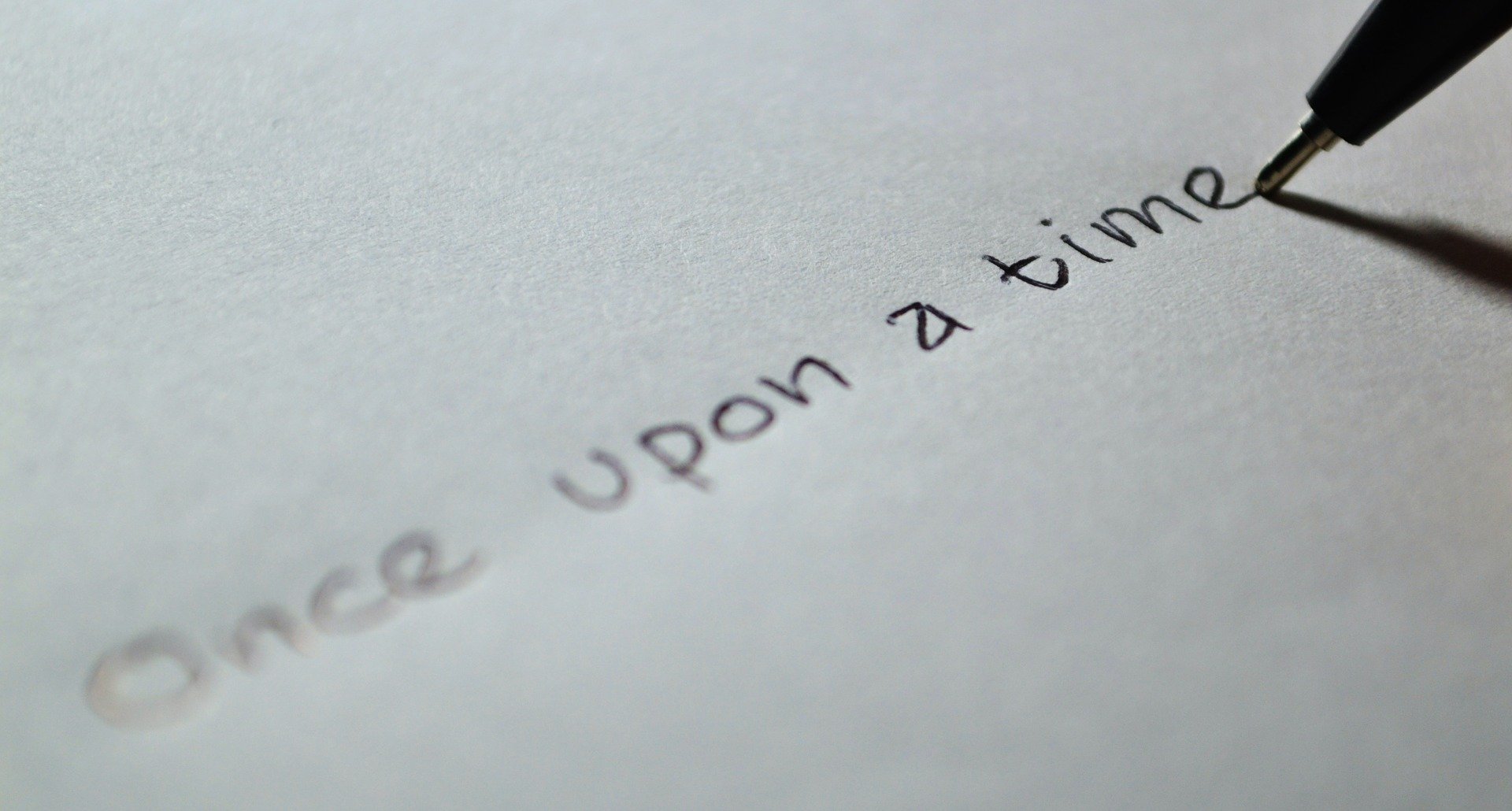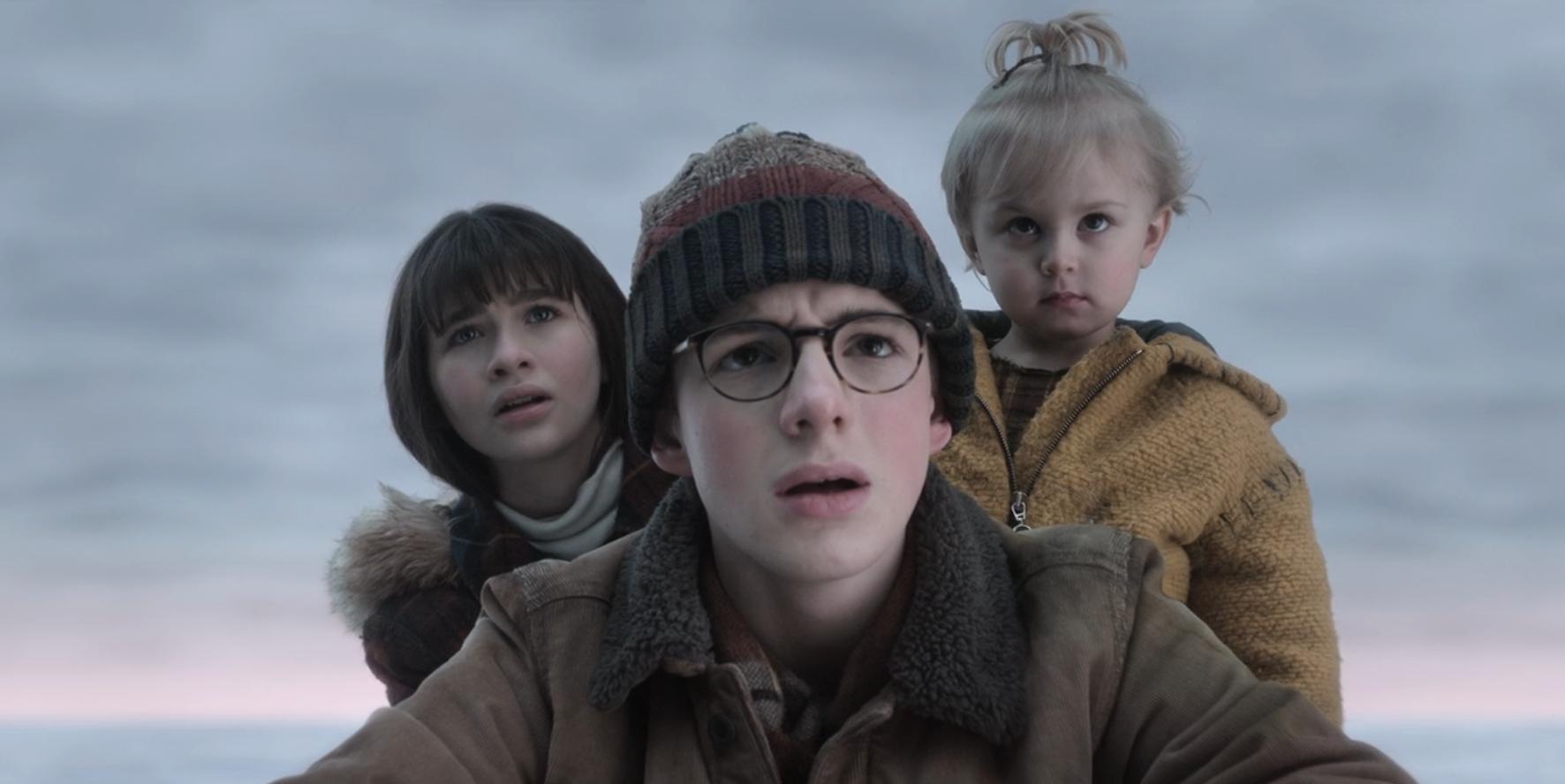By Kathleen and Erin Ramm
How do you write a first chapter that captivates your audience and fills them with excitement to continue reading?
What sets apart the gripping first chapters and the first chapters that make you quickly shut the book and go open the fridge for the third time this hour?
What elements are necessary to write a stellar first chapter, and what elements don’t matter as much?
Your first chapter carries the heavy burden of hooking your readers and making a great first impression; that is why it is so vital to make sure to hit all the right points with your first chapter.
So I did some research. A lot of research. I read first chapters of... my favorite books, recently popular books, and the classics.
I also read dozens of articles online to see what other writers discovered makes up a great first chapter.
And finally, after combining all my notes, I ended up with a list of 40 different so-called ‘requirements’ for a first chapter. But, I thought to myself, "surely, not every point was really required."
So I compared my list with the first chapter of several popular books and analyzed which elements REALLY mattered.
After some intense reading, discussion, organization, and elimination, I finally narrowed down those 40 different requirements into the ULTIMATE FIRST CHAPTER CHECKLIST.
And that, my fellow writer, is what I will be sharing with you today:
The 13 essential elements that every brilliant first chapter must have.
With each element I present to you, I will explain why that particular element is necessary and why you must introduce it in your first chapter. I will also give you an example of each of those 13 elements from a successful book, along with some questions to help you start thinking of ways you can apply each of the points in your own first chapter.
If you hit all of these elements, you will have a captivating first chapter.
This will be a long and in-depth article, so that's why we prepared a free checklist for you! Grab it and then use it to write your gripping first chapter!
All right, grab a cozy cup of coffee or tea, kick your feet up, and enjoy the one-stop-shop for crafting the perfect first chapter.
SET THE STAGE
1. Orient Your Reader
This may be one of the more obvious points, but a very vital one!
You don’t want someone to be reading your book and get to the second or third chapter only to realize with shock that your story is taking place in the 1800's and not in the 2000's and that’s why nobody had a cell phone to call the police when poor Alfred got captured.
You also don’t want to make your reader wait until the second chapter to discover that your story is taking place in a fantasy world and not in San Diego.
Your first chapter should establish the time-period and general location within which this story is taking place.
Take a look at this line from the first chapter of The Lion, the Witch, and the Wardrobe by C.S. Lewis:
“... they were sent away from London during the war because of the air raids. They were sent to the house of an old professor who lived in the heart of the country...”
With these two sentences, the reader doesn’t have to play a guessing game about where they are and what time-period this story takes place.
The first page of the first chapter isn’t even finished, but already we know exactly where we are. Both in time and location.
You don’t have to come straight out and tell your audience the time and location of your story. You can simply hint at the story's time and location by how the protagonist interacts with the location, what he is wearing, how he talks, and more.
If C.S. Lewis were to show the audience the location and time of The Lion, the Witch, and the Wardrobe in his novel, he could simply do what the movie did. Begin the story with the air raids, show what types of clothing our heroes are wearing, and take the children on a train to the country.
How does your first chapter show what time-period it is?
How does your first chapter clearly show what country or world the story is taking place?
Give your reader a hand, and help them get oriented in your novel before continuing.
2. Set the Tone
The tone of your first chapter should signal to the reader what kind of story he or she is getting into.
The words, location, mood, events, dialogue, and even the weather and colors you choose for your first chapter are all going to play a part in setting the mood.
The tone of your first chapter should be an accurate portrayal of the general tone for the rest of your story. It should send a clear message: THIS is the type of story you are reading.
Imagine reading a book with a terribly morbid first chapter, you brace yourself for tragedies to come, only to find - in the following chapters - that this is a romantic-comedy. Imagine how jarring that would be! This is a surefire way to put off your readers.
In the first chapter of Oliver Twist, the tone and mood are very prominent. Even if you skimmed the short chapter you would not have missed the dark, foreboding, and dismal tone.
Charles Dickens sets this dark tone with his choice of words, events, dialogue, location, and narrative.
Words: Sorrow, trouble, mortality, disposed
Events: Oliver’s mother dying during childbirth- leaving him an orphan
Dialogue: “let me see the child and die”
The location: a rundown workhouse in a destitute part of town.
The dark and sorrowful tone that is laced throughout the first chapter sends a clear message that Oliver’s life isn’t going to be all sunshine and rainbows.
What is the overall tone of your novel? Exciting? Humorous? Lighthearted? Tragic? Intense? Mysterious? Dark? Threatening?
How can you portray that tone in the first chapter with words, events, dialogue, location, and narrative?
Don’t confuse your readers with a shifting tone. Rather, immerse the reader by establishing a consistent mood.
3. Establish the Genre
There’s nothing quite like the jarring feeling you get when you're a few chapters deep in the mystery of the story you’re reading and then, out of nowhere, a talking tortoise comes crashing through, riding on a unicorn.
Whether you are writing a fantasy, historical fiction, mystery, adventure, or horror story, make sure that it is obvious in the first chapter.
For example, in the first chapter of The Lightning Thief, Rick Riordan makes it very obvious that this story is going to be a fantasy, even though the main character doesn’t even know it himself. Riordan establishes a fantasy world through the constant foreshadowing of Greek mythology. Oh yeah, and the fact that his pre-algebra teacher turned into a monster (can you tell he also set up a lighthearted and humorous tone?)
If the first chapter didn’t have any foreshadowing, anyone would have thought that this novel was your average contemporary novel… until the event in chapter four where Percy and his mother get attacked by the minotaur. That would have been very jarring indeed.
What is the genre of your novel?
How can you make that obvious from your first chapter?
SPOTLIGHT THE PROTAGONIST
One of the main things, if not the main thing that keeps readers reading after the first chapter are the compelling characters. Particularly the main character.
If they don’t care about the main character, they won’t care about what happens to him. And if they don’t care about what happens to him, then they won’t care about the entirety of your story.
But how do you make the reader care about your main character in such a short amount of time? Well, let's take a look.
4. Introduce the Main Character in His or Her Element
The simplest and fastest way to get a good idea of who your main character is, is to put them in their element.
What does this mean, you ask?
All it means is to introduce the main character in a scene where they are doing what describes them best.
In The Hunger Games, Katniss is shown in her element in several ways. She is using her weapon of choice (bow and arrows), in the only place she feels at home (the forest), while doing the thing that she loves most (hunting).
What is your main character’s element?
How can you put them in their element in your first chapter?
5. Give the Protagonist Something to Want
What is a more interesting first chapter for you?
Example 1: The main character is aimlessly going about her day, but then she gets attacked by wolves in the forest.
Or,
Example 2: The main character’s little sister is fatally sick, so she goes into the woods to find some medicinal herbs to help her sibling, but then she gets attacked by wolves.
Most likely you chose the latter option.
Giving the main character something to want, not only makes the reader care about the character more, but also about the entire story more.
This "want,"- this longing for something more - is what gets the story moving. Fill your protagonist with an emptiness that they believe can only be filled by the goal of your story.
Whether it be the desire of a father to find his lost son, or the longing of a young man to leave a desert planet and become a pilot like his dad.
Take, for example, Jane Austen’s Pride and Prejudice.
From the very first chapter, Mrs. Bennet (the true star of this book, in my humble opinion) wants nothing more than to get her daughters married off. It is this very desire that sets the story in motion.
What does your main character desperately want in the first chapter? (It may or may not be the main story goal)
What does your protagonist long for?
What is missing in your your protagonist's life?
Why do they want this?
6. Reveal a Glimpse of the Hero's (not-so-great) Normal World
It's very tempting to jump straight into the action right as the story opens and have the life-changing moment happen in the very first scene.
But if you don't show what the main character's life looked like before the life-changing event, then the reader won’t even know how the life-changing event is life-changing.
The first chapter should show a quick snapshot of what the main character’s normal life looks like.
The snapshot helps the reader learn more about the main character, and also to contrast this normal life to the life that the main character experiences after the inciting event.
In the first chapter of The Hobbit, the readers get a good glimpse at Bilbo’s normal world before Bilbo gets swept up in his adventure. The first chapter shows Bilbo’s home, Bag-End in bright Hobbiton, and his peaceful life filled with much eating and smoking his pipe.
Because we see Bilbo’s peaceful and simple life before Gandalf shows up at his doorstep, it makes Bilbo going on a perilous journey so much more intriguing.
It makes the reader ask, “How can someone like Bilbo survive on a quest across Middle Earth? What is he going to do?”
So give a brief snapshot of what your main character’s life looks like right before all the action happens. Just enough to get a good idea of what it is, but not too much where you end up boring the reader.
What is your main character's normal life like?
How can you show that in your first chapter?
7. Illustrate the Problem with the Protagonist's Life
A great way to hook readers and keep them reading is to make them yearn for change and to promise that the story will do just that.
In the first chapter, you need to show the problem with your main character’s life and that he is desperate for change.
If the main character’s life is fine as it is, then the reader might just decide to keep it that way and stop reading. However, if there is an apparent problem in the main character’s life that the reader hopes will be resolved in the end, then they'll keep reading.
Is your main character a spoiled prince who leads a self-centered life and cares about nothing but building summer homes for himself?
Or maybe your main character is an old man who is living a bitter life because he is still holding onto the sorrows of his past?
In the first chapter of Oliver Twist, there is no mistaking that there is a problem with Oliver’s life. The first thing we learn about him is that he is a lonely orphan, whose life is filled with neglect, hardship, and tragedy.
All we want for Oliver is for him to have a happy and successful life that isn’t so cruel. The readers hope that by reading on, Oliver can finally live a happy life.
What is the problem with your main character’s life?
How can you show the problem with their life in the first chapter?
8. Hint at the Theme
When a reader starts reading a book, they might subconsciously ask themselves a few questions.
“Is this book going to be worth my time?”
“Am I going to learn anything from this book?”
“Is this book going to be meaningful?”
If you have a theme in your story, then the answer is a responding yes! To all three questions.
If you hint that this book is more than fluffy entertainment, and is instead an exploration of deep topics, then they will be hooked.
Your theme is absolutely essential to unlocking your first chapter's potential.
In the first chapter of The Green Mile by Stephen King, we learn that the story's protagonist is a death row supervisor. To give us a glimpse of what themes are going to be delved into throughout the story, Stephen King slips in these two simple sentences:
“There was only one time I ever had a question about the nature of my job. That, I reckon, is why I'm writing this.”
It’s not much, but it lets us know that we are going to be examining questions about death, our reaction to it, and more. We know this story is going to take us along for a tough but meaningful exploration of this dark theme.
Here are a few ways you can hint at your story’s theme in the first chapter:
What is the theme of your story?
How can you hint at it in the first chapter?
9. Present the Protagonist's Internal Conflict
The internal battle of fear and desire that rages inside of your main character throughout the entirety of your story must be introduced at the very beginning of your story.
This internal conflict is what gives the external conflict meaning. And if the external conflict doesn’t have meaning, then the whole story seems pointless.
How to go about creating internal conflict? The answer is simple. Give your protagonist an abstract fear. Then give your protagonist a desire. Finally, pit the fear and desire against each other.
To make it clear about what the fear vs desire conflict is, I’ll list multiple examples.
How to Train you Dragon: Hiccup desires to be accepted as a fellow Viking but fears the very thing that will make him one: killing a dragon.
The Lord of the Rings: Aragorn desires to protect Gondor and knows he needs to reclaim the throne as the long lost rightful King, but he fears the same corruption that ran through his ancestor's veins and led them astray.
The Hunger Games: Katniss desires to survive the Hunger Games, but fears she’ll lose her humanity.
The Hobbit: Deep down, Bilbo has a desire for adventure, but he fears leaving his comfortable life and facing the dangers of the world outside the Shire.
Having the main character’s desire and fear conflict gives the story so much more depth and intrigue than if the main character’s desires weren’t surrounded by his fears.
What does your main character desire?
How do your main character’s fears conflict with that?
How can you hint at or show this internal conflict in the first chapter?
GIVE THE READERS A REASON TO STICK AROUND
10. Craft a Killer First Sentence
Your first sentence hook doesn’t have to be some deep, outstanding masterpiece, it just has to grab the reader's attention and make them curious.
If it doesn’t grab their attention they might just move on to another book. And if it doesn’t make them curious, then they’ll just think they already know what's going to happen in your story and decide that there is no point in reading it.
In other words, your “hook” must indeed hook the reader.
But how do you make a great first sentence hook?
There are many blog posts out there on how to create a great first sentence.
If you can establish the main character’s voice in the first sentence, then that is great.
If you can establish the setting in the first chapter as well, then even better.
But above all, the one thing that every single first line must do is make the reader ask a question.
Let’s take the most popular first sentence as an example,
In a hole in the ground, there lived a Hobbit.
For readers unfamiliar to Middle-Earth, this sentence prompts the questions:
What is a hobbit? And It lives in a hole?
And another famous example, this time from The Tale of Two Cities, by Charles Dickens
It was the best of times, it was the worst of times, it was the age of wisdom, it was the age of foolishness…
The paradox presented sparks curiosity. It makes the reader ask questions. And if you can do that in your first chapter, you gave your reader a great reason to stick around.
How can you spark curiosity in your reader's mind?
Brainstorm as many first sentences as you can. Then choose the most captivating one.
11. Spark Curiosity
Curiosity may have killed the cat, but it kept the reader reading.
Unanswered questions will keep your reader up at night and keep them turning the page.
But here is the main reason why curiosity is so powerful in storytelling: curiosity gets the reader involved.
When the reader is curious, they start thinking up possible answers of their own. They start theorizing and imagining things themselves. They play an active part in the story.
With curiosity, your story becomes a collaboration of your ideas and the reader's imagination.
But how do you create curiosity?
Well, we already created curiosity with the first line, but how can we build on that? How can we continue to give the reader more questions than answers?
In the first chapter of Treasure Island, Stevenson creates curiosity in two ways.
First, he introduces a mysterious object: a locked chest.
What could be in that chest? Why is the sea captian so secretive about it?
Second, Stevenson inserts an intriguing line of dialogue that forshadows the entrance of a mysterious character:
"Keep your weather eye open for a seafaring man with one leg"
Who is this "seafaring man with one leg"? Why does he have one leg? And why should Jim look out for him? What will this character mean to the story?
Curiosity not only makes the chapter intriguing, but it also makes the reader want to continue reading.
What unanswered questions can you put in your first chapter?
What mysterious person, object, dialogue, or place can you put in your first chapter to create curiosity?
12. Establish Dread
Creating dread is like telling your reader, “Hey, just you wait until you see what happens... Bwahahaha!.”
Dread might be awful in real life, but it is so captivating in stories.
The dread is what keeps the readers frantically flipping page after page.
That is why putting dread in your first chapter is so important. Whether it’s something to dread far off in the latter half of the story, or something to dread that will happen in the next couple pages.
Lemony Snicket is the master of crafting incessant dread throughout A Series of Unfortunate Events.
In a book literally called The Bad Beginning, he starts the novel with:
“If you are interested in stories with happy endings, you would be better off reading some other book. In this book, not only is there no happy ending, there is no happy beginning and very few happy things in the middle. This is because not many very happy things happened in the lives of the Baudelaire youngsters.”
The very first line outright tells the reader to stop reading. But because of this reverse psychology trick and the dread he sets up, we can't help but continue reading.
For one more brilliant example, you need not look further than the end of the first chapter of Oliver Twist. Charles Dickens ends his chapter with this depressing line:
“... the orphan of a workhouse- the humble, half-starved drudge - to be cuffed and buffeted through the world, despised by all, and pitied by none. Oliver cried lustily. If he could have known that he was an orphan, left to the tender mercies of churchwardens and overseers, perhaps he would have cried the louder.”
What disasters in your story can you foreshadow in your first chapter?
How can you continue to build the dread throughout the story?
13. Knock Over the First Domino
Must every first chapter have the inciting incident? I was debating whether or not the perfect first chapter has the inciting incident or not. Some first chapters had it, and others didn't.
But what I did find was, although not all first chapters have the inciting incident, what they did have in common was the tipping of the first domino that led to the unfolding of the rest of the story.
Meaning that your inciting incident can be in your first chapter or not, but what does need to be in your first chapter is the event that leads to all the rest in your story.
For example, in The Hobbit, the first domino is when Gandalf arrives at Bilbo’s doorstep and invites him on an adventure. One thing leads to the next, and soon Bilbo is running out his door on an adventure.
As you can see, you don’t need to have the inciting incident in your first chapter, but you do need the first domino in your first chapter.
The reason why The Hobbit was extra brilliant at this point, is because Tolkien managed to show Bilbo's normal life (see point 6) and knock the first domino down in the first chapter. The key is balancing the set-up and introduction of the first domino.
Imagine if Gandalf didn’t arrive at Bilbo’s doorstep until the second chapter. An entire chapter of Bilbo going about his comfortable life with no interruption -as charming as that might be to some readers - will quickly grow dull.
If you give your reader a glimpse of your protagonist's world (to ground the readers) and also knock over the first domino (to engage your readers) in the first chapter, you will hit that perfect balance.
What is the first event that sets in motion your protagonist’s main goal?
How can you put that in your first chapter?
--
Phew, congratulations on making it to the end!
Now you know all you need to write the perfect first chapter.
Do you need every single one of these elements? Well, depending on your style and genre, perhaps you don't. But I guarantee you that the more of these you hit, the better.
Now give yourself a pat on the back! You are on your way to writing the perfect first chapter.
Don't forget to grab you checklist!
We hope you found this post on, How To Write The Perfect First Chapter, helpful! If so, feel free to share this article with your writing friends.
Also, let us know in the comments below...















Incredible article, Kathleen and Erin! Super valuable!
I went through your checklist with the first chapter of my current work-in-progress and found some areas I can improve. Thanks!
I can’t wait to read more in-depth guides like this one for other key chapters!
Spiffing good job.
Thank you!
Ok! I will have to indeed sit down with a cup of tea to get through this article as I should. I can’t wait to read it in full.
Great! I hope you enjoy both this article and your cup of tea.
Wow! This is an amazingly comprehensive list, complete with good examples. Thanks so much! It’s one thing to know a good chapter when you read it, but another when you try and write one yourself. This is really helpful and got me thinking with fresh ideas. 😊
Thank you! So glad it helped you. Researching for this article helped me a ton with my first chapters as well. I never realized what a first chapter needed until I started to dive in and try to find the answer while preparing to write this article.
Yeah! Your examples of Rey (at least, I think it was her), Bilbo (or Frodo? It was a hobbit, I know that for sure) and Star Lord (He’s unmistakable; no one else I know dances to weird songs using a rat-lizard as a mic) were awesome! Long live those three characters! (Well, Bilbo made it to at least a hundred and thirty-one, so…..Long live the other two?)
Yeah. I’m crazy. I don’t mind.
My first chapter starts with the action/events that set my story in motion. I start with the antagonist and write it as a recollection of events from inside his/her head, so from the 1st person POV. He/she murders a celebrity in their own home. Readers know they’re reading from the killer’s perspective but they’re not given any information as to who the killer is. They’re only told who the victim is, given an overview of the scene – the clean up and escape, plus an insight into the killer’s thoughts, feelings and a glimpse at their motive. The murder itself is not described, nor is the cause of death revealed. The chapter is only about 1200 words.
I then introduce my protagonist at the start of Chapter 2. I write her story from the 3rd person POV throughout the book. The story of my protagonist begins when the body of the victim that was murdered in Chapter 1 is found and is reported in the news.
Is it bad to start at the start with what actually happened and not introduce my protagonist until the following chapter??
Also is it ok to write the antagonist from the 1st person POV and the rest of my novel from the 3rd person? 80-90% is based around the main character and a handful of secondary characters. So only a small amount is written from the antagonists perspective in the 1st person POV??
A number of authors do this. For example Tess Gerritsen in her Rizzoli and Isles series.